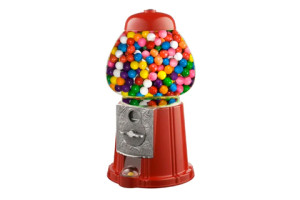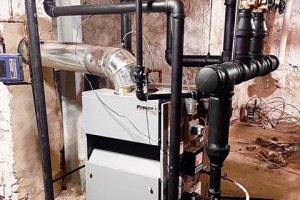
Hello, old friend. I’m writing today to say thanks, and to say farewell. This will be my last column.

The steam seminar was to be in North Carolina, which was strange enough, that being the state where most folks only know how to say, “Heat pump, please.”
It was also to be in a nasty, windowless, brick-walled basement room in what used to be a hospital, but was now an office building. I immediately looked around for Jack Nicholson and Nurse Ratched. Welcome to the cuckoo’s nest.
“We’re doing it here because the people who own the building are our clients,” the contractor explained. “Not many people in this state want to work on steam heat. We’re hoping you’ll walk around with us after the seminar and look at some of the problems they’re having.”
I looked up at the radiator that was mounted on the ceiling. “Love to,” I said.
The class went well. The contractor had invited his own people, as well as several of the area’s inspectors. They admitted they knew absolutely nothing about steam heat but that they inspected it anyway. “How do you do that?” I asked.
“We look for what the manufacturers tell us is right,” one drawled.
“Which manufacturers?”
“Usually the boiler (pronounced “bowler”) manufacturer,” he said.
“But there’s a system attached to the bowler,” I said.
He nodded. “Yep, that’s the problem.”
I asked the contractor about the steam pressure and he told me they were running the boilers at about eight psi. “Did you know they run the Empire State Building at one-and-a-half psi?” I asked.
“Nothing works if we go under eight pounds,” he said.
“And it works at eight pounds?”
“Well, yes, but then parts of the building get too hot, so they open the windows.”
“Is there water hammer?” I asked.
“Do peaches have pits?”
“This building is an annuity for you, isn’t it?”
“No one else will touch it,” he smiled.
“Nice.”
You see that’s a good situation, especially for a contractor willing to learn about older systems that, when neglected, start behaving like Mike Tyson at a beauty pageant. If you can work that system back into the shape it was in when new (that being fast, quiet and efficient), your customer will never go anywhere else, and he will tell everyone he knows that you are the best there is. And that’s good.
So here’s how to begin:
Look at the near-boiler piping. If water is leaving the boiler with the steam, you’ll never be able to heat the building. The near-boiler piping’s job is to separate the steam from the water and put the water back into the boiler. Get the boiler manufacturer’s specs for that near-boiler piping and compare it to what you see. If the piping is wrong, redo it. That system will never work properly if the piping allows the water up into the building.
Watch the pressure. With steam heat, especially in institutional buildings, it’s not normal to be running at high pressure unless they’re using the steam for some sort of process, such as cooking food or sterilizing instruments. The highest pressure you will ever need for space heating is two psi. That’s been the rule since 1899 when heating engineers agreed to use steam-pipe-sizing charts that kept the pressure drop very low. This is how the Empire State Building gets by on such low pressure. It’s not the pressure that heats the people; it’s the latent heat of the steam, and that’s there at zero psi. The only pressure you need is enough to overcome the pressure drop as the steam races through the pipes, and that’s only about one ounce of loss for every 100 feet of travel.
Think like air. If you can’t heat the place on low pressure, there’s probably air trapped in the pipes that can’t escape because the air vents are either broken or missing. Steam is lighter than air and the two will not mix. Every steam system starts out filled with air. When the water turns to steam, it expands 1,700 times, and that’s at zero psi. The steam pushes the air ahead of itself like a plunger. If the air can’t get out, the steam stops moving and gives up its heat. A contractor who doesn’t understand this will crank up the pressure. That gives the steam more power to compress the air. The pipes get hot a bit further out into the system. The contractor thinks this is good, so he raises the pressure again. There’s still no heat in much of the building, and the burner is running all the time, people are opening windows, and the contractor thinks this is normal. That’s your competitor. He’s a knucklehead.
Get out of the boiler room. Don’t be a flamehead. There’s a big, beautiful system out there. Go wander. Know that the system is filled with air at the start of every steaming cycle. The steam has to push that air out, so start at the boiler and ask yourself the key question, “If I were air, could I get out?” Follow the pipes and keep asking that question. Look for the main vents, or the vent line on the condensate- or boiler-feed pump receiver. When steam traps start to fail, steam will come out of those receiver vents. Some knucklehead will plug the vent and raise the pressure, and that’s when the place turns into the cuckoo’s nest.
Know the components. If you see something you can’t identify, take a picture of it and post it on our website, HeatingHelp.com. If it’s old and strange, someone on our site will know what it is and probably have the original literature for it. Trust me; we live for questions like that. We have no lives. At Nurse Ratched’s former hospital, the contractor pointed at an iron shape that had more coats of paint than the Brooklyn Bridge. “What’s that?” he asked and I told him it was a Series 19T heavy-duty steam trap, made by the Webster Company in the 1920s. It was able to handle unusually large amounts of condensate. It wasn’t working, and that was one of the reasons why the system was making more noise than the Blue Man Group. I know this because I have no life.
There’s more, of course, but that short list is a grand place to begin. Not every building is going to have a heat pump, and that’s especially true of older institutional buildings. Get to know those systems and you’ll do better than the guy who sells only plain-vanilla heat pumps or furnaces. Some knucklehead will always beat that guy’s price.
How much better it is to sell what’s in your head.

Hello, old friend. I’m writing today to say thanks, and to say farewell. This will be my last column.

My six-year-old grandboy, Brendan, was in the vestibule of the diner when the bubblegum machine caught his attention. It was one of those spiral models that appeared in t...

Subdural posed a question on The Wall at HeatingHelp.com in the Strictly Steam section, where some of the sharpest knives in the drawer post every day. The question was a...